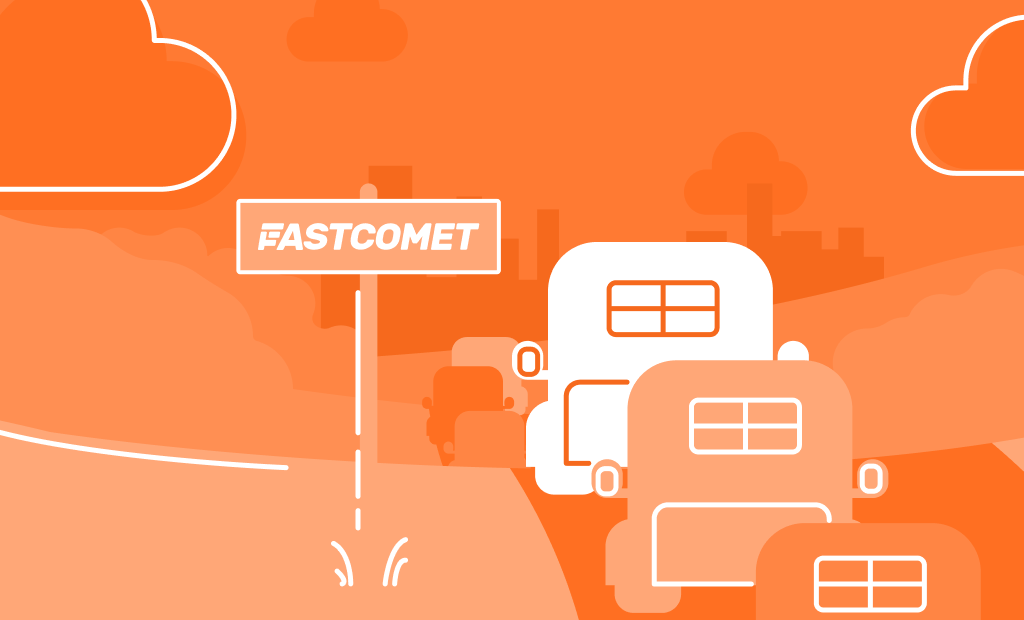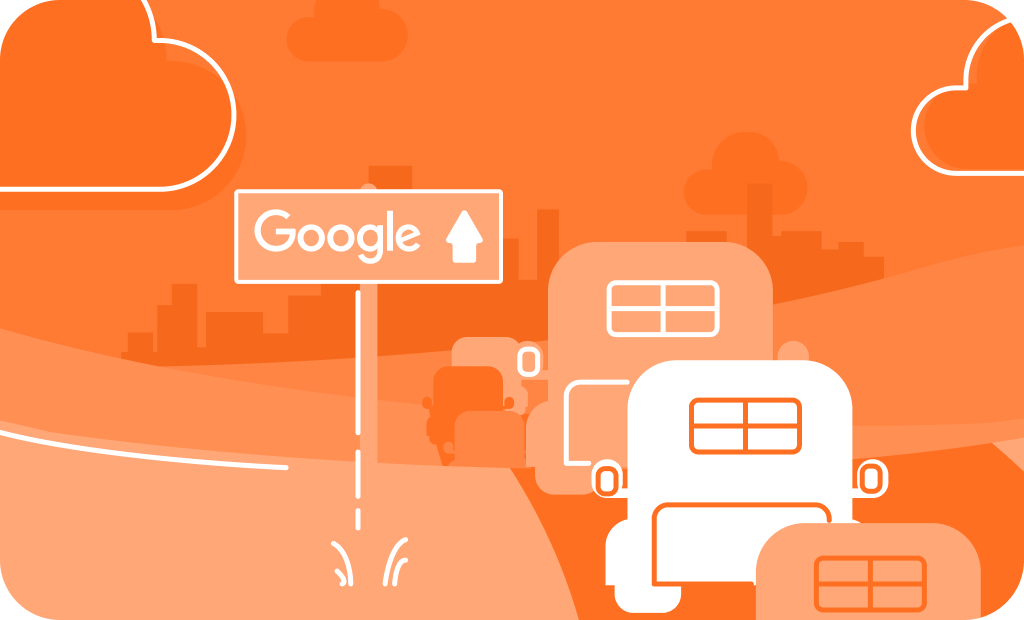
Top Tactics for Quality Website Traffic in 2024
With the rise of online stores in the past decade, “traffic” has become a hot topic for many business owners. Traffic is what drives a business and also what brings in revenue. Without traffic, even the best online store will not turn a profit. That is why driving quality traffic to your website is such an important factor in 2024, and nowadays in general. In this blog post we will lay out the top tactics for quality website traffic in 2024.
That does not apply just to online stores, though. Any business that has an online presence, and strives to earn money from that online presence, will benefit from an increase in the correct type of traffic. Whether it is an online retail store or a website that generates revenue through advertisements alone, traffic will bring people to the website. Without people, there is no revenue, so you can see why traffic is so important. Imagine if nobody visited Amazon, for instance. It would not have become the conglomerate it is today.
Why is Traffic Good for Your Website?
We mentioned this in our introduction but would like to elaborate more on the topic. Traffic brings customers, therefore, brings revenue. That is the foundational reason why driving traffic to your website is good. However, there are a few other ways traffic can help your website. For instance:
- Traffic is an excellent way to determine the effectiveness of your marketing. Did your visitors increase after a marketing campaign? Then it is working. If not, then you need to re-evaluate your marketing strategy;
- Typically, there are ways to extract analytics from traffic. These analytics can give you insight into the type of visitors you are getting and why they are visiting your website. That can, in turn, help you focus your marketing efforts;
- Search engines love popular websites and tend to trust them more. That means the more visitors you get, the more search engines will likely recommend your website.
As you can see, it is about more than revenue. A solid marketing campaign, knowledge of your customers’ needs, and a good reputation with search engines can help your website improve immensely. Of course, a flood of people can do that as well, but it is always better for long-term plans to have a good foundation before trying to accommodate that flood of people.

Quality Traffic is Important
We already discussed several reasons traffic is good for your website. Still, we must examine one big difference: quality and free traffic. Quality versus quantity. The flood of people we mentioned previously would more often than not fall under “free traffic” because it is only a large number of people. That sounds great, but that is usually not the case because you don’t want only numbers; you want visitors who will actually interact with your website. That is called engagement, and it is essential for boosting your website.
Imagine if only a hundred engaged with your website out of a thousand people. Only ten percent stayed and looked at your website and generated any revenue. The other ninety left, which means something is not quite right with your marketing strategy. Narrow it down, don’t use the shotgun approach, and you should start seeing more actual customers visit your website. Volume is not always the best option, which also applies to driving website traffic.
You want quality traffic for your website. That will attract people interested in your product or business. Free traffic can actually harm your website, but we will discuss that later on.
Ways to Drive Quality Traffic to Your Website
Before discussing specific ways to increase traffic to your website, we would like to quickly mention several overall strategies. These strategies will drive high-quality traffic to your website, but they will all require time and commitment from you. Unfortunately, no tools out there will generate quality traffic while also being hands-off. If you want good traffic, you will have to work for it, and you should consider these options.
- Social Media
- Blogging
- Online Ads
- Email Ads
- On-page and Off-page SEO
- Online Directory Listings
These strategies broadly describe ways to drive quality traffic to your website. They are not specific methods, but we will discuss them further below. Read on!

How to Use Google to Drive Quality Traffic?
SEO and website traffic are often associated with Google and for a good reason. Not only is Google the driving force behind both those things more often than not, but the company also provides ways to push traffic to your website. They will not make your website explode, but they are both free and perfect starting points.
Complete Your Google Business Profile
Google allows each user to create and optimize a business profile within their Google account. You are likely already familiar with Google Business if you have looked at any business online. The little snippet you see with the business’ picture, map location, reviews, and general information is its Google Business profile. Making that profile appealing and informative is essential nowadays, as it will provide potential customers with important information at a glance without them having to use Google further.
The best part is that this profile is entirely free. When you create a Google account, you can access it and fill in with your business’ information. Having such a profile will help in these ways:
- Your business will show up when the relevant search is performed for your particular services and location;
- Customers looking for the services you provide are more likely to be inclined to engage with your business, therefore generating quality traffic;
- The reviews customers post for your business are a great boon to further solidify the quality of service you provide;
- Any posted images will give users an excellent visual representation of what you can do for them;
- Providing potential customers with concise and important information at a glance will make your business more appealing.
Optimize Your On-page SEO
On-page SEO is another free method to boost your website’s traffic through Google. On-page SEO itself is not exclusive to Google. Still, we mention it in this part because Google is the biggest search engine in the world. Anyone looking for your business is more likely to use Google than not. What we describe here will also likely work for any other search engine.
What is on-page SEO, though? Simply put, it is the practice of optimizing your web pages to rank more highly in search results. Since it is on-page and not off-page, all changes you must make will be on your web pages themselves. Google loves keywords, so that is the first thing to optimize. Have the keywords which describe your business best on your web pages. They are not the only factor, though. Aside from keywords, these other cues will boost your SEO with Google:
- Site Content
- External Linking
- Internal Linking
- Images
- Title Tags
- Meta Descriptions
- Page Speed
- Headers
Any of these elements will be used by Google when deciding how relevant your website is to a search request. The article we linked at the beginning of this part goes in-depth about on-page SEO. We recommend you give it a read since the point of our post is to introduce you to various methods of increasing quality traffic to your website. On-page SEO is one of those methods.
Use Google Analytics
Google Analytics is a stellar tool for keeping track of how your website is doing over a period of time. Below are a few of the more essential metrics Analytics can show you.
- Users – The number of unique visitors your website has received;
- Bounce Rate – How many users left your website after viewing only the home page;
- Sessions – The sum of visitor interactions within a thirty-minute window;
- Pages Per Session – The number of pages that were viewed in a session;
- Page Views – Total number of pages viewed.
Additionally, Analytics keeps track of several dimensions, which can be used as additional descriptors to the provided data. The dimensions can tell you from which countries your traffic is coming, your users’ age group, browser, device type, and language, to name a few.
All of this information will be useful to you to refine your marketing strategy and drive quality traffic to your website.
Free Methods for Quality Traffic
Let’s look at other methods to drive quality traffic to your website outside of Google. These will also be free but still require time and effort to get the most out of them. Unfortunately, there are no easy but effective ways to boost your website’s traffic: they all need you to do some work.
Promote in Relevant Online Communities
This is likely the easiest way to generate quality traffic and organic search results. Almost everyone online uses one online community or another, so advertising in them should boost your website. Facebook, X (formerly Twitter), and Reddit are the big three. Still, if you know of any local online communities – such as forums or chat groups – you can also advertise there. If you have a YouTube or Twitch channel or know anyone who can shout out your business, that is also a great idea.
Please be cautious with this method, though. Overdoing it or disregarding the online community’s guidelines can have the opposite effect. Our best suggestion is to find the most relevant place to advertise, be respectful, and be active in the group. Follow their rules, and advertise with moderation, which should help your website grow and get some good traffic.
Post on Social Media
This method builds on top of the previous one. If you have a social media account for your website, you should post content relevant to the website you want to drive traffic to. For instance, when you make your promotion in the online community, you can include a link to the social media for your website. That way, anyone interested will visit your social media, where you will post any useful information or updates about your website.
Social media is a great place to interact with the people who use your website and promote it further. While advertising in an online community is a great start, posting on social media is an excellent continuation of that. Excite visitors with what your website can do for them, show them what it can do, and that should also drive some quality traffic to it.
Create a Blog
A blog is a great way to answer frequently asked questions related to the topics your website is based on. Writing content on frequently asked questions is a great way to drive genuine traffic to your website because there will always be people who ask questions. All you need to do is provide the answer. Research keywords that people often search for online and write short posts about answering related questions. For instance, you can use Semrush’s Keyword Magic Tool to give you a good idea of what people search for.
Many popular companies have blogs attached to them, discussing everything related to the main website. As you can imagine, it is an easy transition from a well-written blog to users on the main website.
Get Listed in Online Directories
Listing your website in free online directories and review sites is another great way to increase traffic. It is like having a Google Business profile but for third-party websites. For most of these sites, your profile will have a link to your website, so actively updating these listings and getting positive reviews will likely result in more website traffic. In addition, many directories like Yelp have strong domain authority on Google. There’s a chance that your business’s free Yelp page could rank high for relevant searches.
Email Marketing
Newsletters are great when you are actually interested in their content. Many of us view newsletters as spam nowadays, but they can actually hold great information about what a website is doing. Adding a newsletter to your website’s functionality is an excellent way to keep your customers informed about what has happened in the past month and what is coming. We recommend keeping it on a monthly basis because a weekly newsletter is more likely to be viewed as spam and put off customers.
What we mentioned in the part about promoting in online communities is valid here, too: be careful with your email marketing. Don’t send message after message to your subscribers because that will drive them to unsubscribe and even avoid recommending your website to others. That is why we recommended the monthly frequency. It is not intrusive, it is not often enough to be considered spam, and you can tell your customers everything they need to know without sending them message after message.
Target Long-tail Keywords
When searching online for something specific, the more detailed and precise your query, the better the results that you will get. Such detailed and precise queries are usually in the form of longer keyword phrases, and that is what long-tail keywords are: a phrase consisting of at least three keywords, particular to what you are searching for. Optimizing your website’s content to target long-tail keywords will make it more appealing to search engines and drive more traffic.
When adding metadata to your website, try to use such long-tail keywords. It will make the search engine more likely to show your website in the results due to these keywords. That is because such keywords are less competitive, to begin with (people often prefer to use shorter keywords) and more precise. Therefore, Google is less likely to show pages that don’t have the exact information a user is searching for. Your pages, on the other hand, will be optimized appropriately with their long-tail keywords and will appear exactly when someone searches for relevant content.
You can go to Google right now and find long-tail keywords yourself. Start typing a “how to” question, and Google should show you some suggestions. The longer the query, the more precise it gets.
SEO Best Practices
This last part is a general suggestion, as there are too many SEO best practices to name in this blog post. Fortunately, we have a tutorial on these practices and strongly suggest you take a look. These are changes you can make yourself, and they should boost the SEO score of your website and drive more traffic to it as a consequence. SEO and traffic are closely related, which is why we have been mentioning it so often.
Paid Methods for Quality Traffic
We have discussed some free methods of driving quality traffic to your website, and we would like to bring up a few paid ways you can use. These will cost you some money but usually require less involvement than the free methods. They are not entirely hands-free and will cost you money, which is why we wouldn’t classify them as fully automated and not requiring any attention.
You will notice that they all revolve around advertising, and that is for a reason. It is the most effective way to drive quality traffic. Further below, we will discuss another paid or free method to drive traffic and why you should avoid it.
Google Ads and Maps
Google Ads is great if you have some extra budget for advertising. You have probably already seen some search results in Google that have “Ad” or “Sponsored” next to them. Those websites use Google Ads to advertise in the search engine result, usually towards the top of the page. If you decide to sign up for Google Ads, you will need a Google account and be ready to do a bit of a setup to get everything going. Google will guide you through the process, and everything is self-explanatory; make sure you are absolutely certain what your business is about, what keywords are most relevant to it, and what kind of advertisement you want to make. Once you are done, you will select your budget, showing you roughly how much each click will cost and how many visits per month you will get.
Yes, Google Ads uses a pay-per-click model, which means you will be charged every time someone clicks on the ad you created. It might seem like a scary prospect at first, but that is why it is best to start with a smaller marketing campaign, see how things go and if you get any clicks from it, and expand from there. In the end, the price should be justifiable.
You can also use Google Ads to have your business appear at the top of search results in Google Maps searches. Consider that if you notice that most people look for your business rather than your website.
Social Media Ads
In the same way Google has ads in its search results, social media has ads that can appear in people’s feeds. You have probably noticed how some posts in your feed aren’t from people you are following but are relevant to your interests and say “Sponsored” or “Ad” or something similar. Those are the paid ads. Again, just as with Google, you can pay your chosen social media to push an advertisement you made. Each social media which offers such services has its own way of handling ads like those. For instance, Facebook and Instagram have the Ads Manager, and Twitter has Twitter Ads. When you create an ad, each time you get a click on said ad, you pay for it, exactly how it is with Google Ads.
As you can imagine, directly advertising in people’s feeds can be a strong tactic. Don’t worry about it being intrusive, because it is not. Only people interested in what you are advertising will see the ads because the keywords you used will be relevant to the keywords they typically search for on social media.
Display Ads
You have definitely seen a display ad. It is usually placed in the periphery of a page and uses visuals to attract attention. If you don’t use an ad blocker, you already know what such an ad looks like. Like most other online adverts, display ads are relevant to keywords you search for or to the website you are currently on.
They are very similar to the other types of advertisements we have discussed so far. Still, instead of appearing in search results or social media feeds, they appear on web pages. Search engines like Google and Bing provide their own display advertisement services. Pay-per-click is one way you can be charged for a display ad, but there are also the CPM and CPA methods.
- Cost Per Mille (CPM) – This payment plan revolves around advertisement views. The advertising company will charge you per 1000 impressions. An impression measures how many times your ad was displayed on a page. This type of payment plan does not take into account any clicks on the ad and only keeps track of how many times it was shown on a page. Aside from pay-per-click, this payment plan is the other more popular one;
- Cost Per Acquisition (CPA) – This type of payment plan is more closely related to websites that actually sell a product. You only pay for your advertisement when someone buys one of your products after clicking the ad. It is not as common and does not apply to every type of website, but we wanted to inform you about it.
Like all other advertisements, display ads are another excellent method to drive quality traffic to your website. If you have constructed your advertisement well, it should only be shown on relevant web pages and therefore reach people interested in your website.

Avoid Traffic Generators
Traffic generators are what we warned you to avoid in the previous section. While, yes, you can absolutely use a free or paid traffic generator to push more people toward your website, there are a few downsides to that plan. At the beginning of this blog post, we discussed the difference between quality and quantity regarding website traffic. At the moment, traffic generators provide primarily quantity without quality. While there have been advances to make generators actually interact with your website, they are still a bot in the end, and that carries a lot of risks. Yes, having a generator flood your website with traffic may seem like a fantastic prospect. Still, the downsides far outweigh the benefits for us to recommend them. Below we will elaborate on some significant downsides traffic generators have.
Your Traffic Won’t Be Targeted
The ultimate purpose of getting more visitors to your website and ranking higher on Google is to increase the number of people who interact with (and become customers of) your website. If your visitors aren’t targeted, they aren’t likely to engage with your website, and you’re more likely to see your lead and conversion rates decline. There is no point in getting more traffic to your website if those visitors are not likely to engage with your pages, convert into leads, or become customers. Increasing your website traffic does not happen overnight. It takes effort, but the effort you put in will equate to the quality of the traffic you generate.
Auto Website Traffic Generators Can Hurt Your Rankings
Google can often detect bot behavior or suspicious of spikes in activity, and can monitor how users interact with your website. Using an automatic traffic bot or generator will likely attract the wrong kind of attention from Google, hurting your reputation and, thus, your ranking. Google does not like it when websites try to deceive it or the website’s visitors.
Your Site Could Get Banned
If your website attracts bot traffic, you risk getting blocked from online advertising platforms. Even worse, your website might get removed from Google. The risk is absolutely not worth it. It can have the opposite effect: getting banned from Google, or any other search engine, can decrease the quality of traffic flowing to your website. Take the time to build up high-quality and sustainable traffic to your site.
Final Thoughts
We sincerely hope this post will give you a good idea of what quality traffic is and how to drive it toward your website. The biggest thing to remember is that while there are easy ways to increase your website’s traffic, they are usually not worth it and carry risks. The best way to drive more quality traffic to your website is to put effort into marketing it without relying on cheap or free shortcuts.
Be active, be perceptive, and advertise your website. If you offer a quality website and are smart about how you market it, the quality traffic will start flowing and increase over time on its own.

The latest tips and news from the industry straight to your inbox!
Join 30,000+ subscribers for exclusive access to our monthly newsletter with insider cloud, hosting and WordPress tips!
No Comments